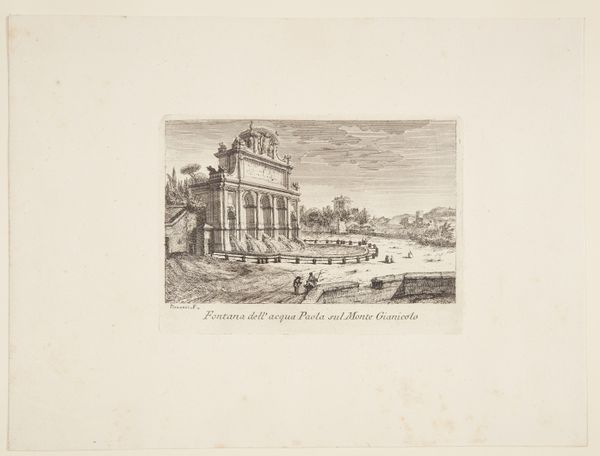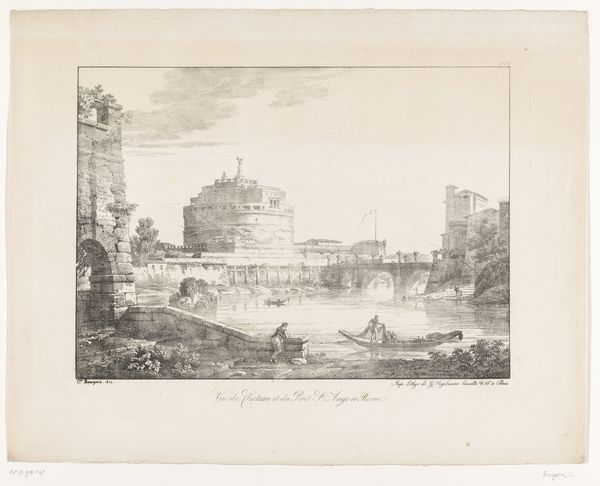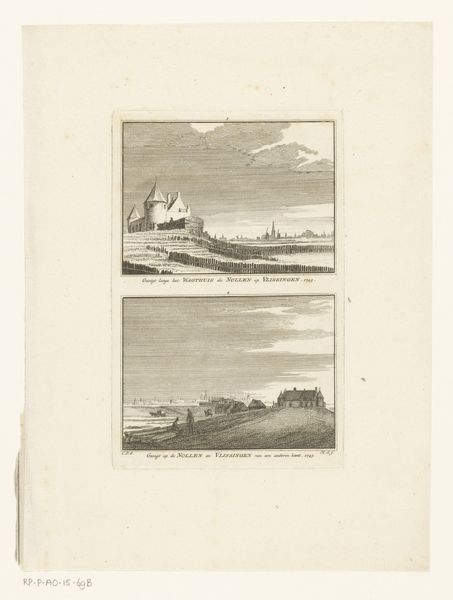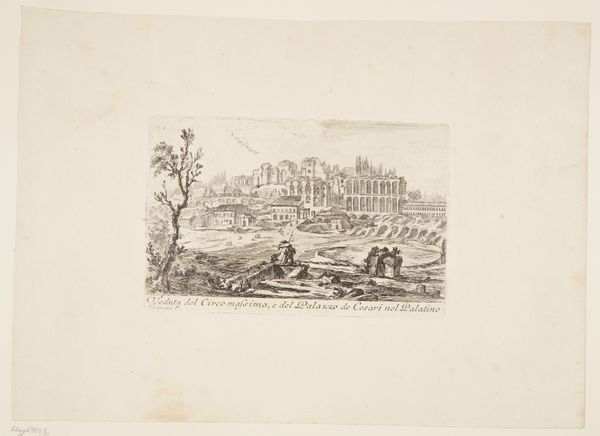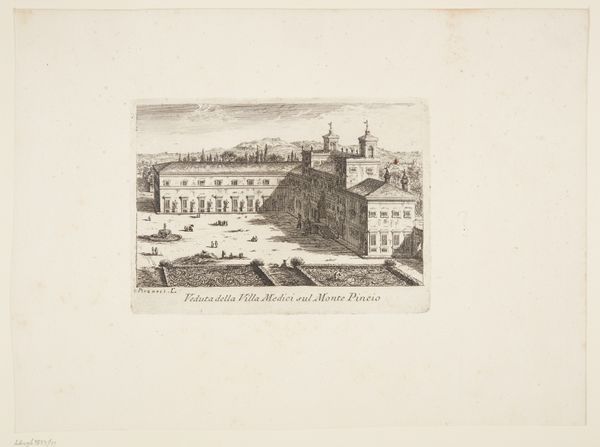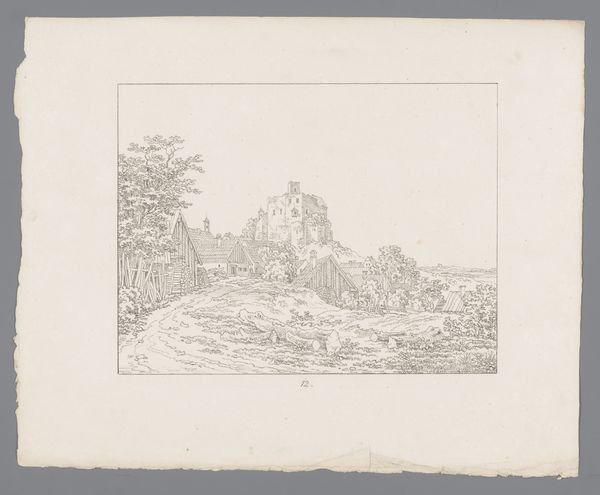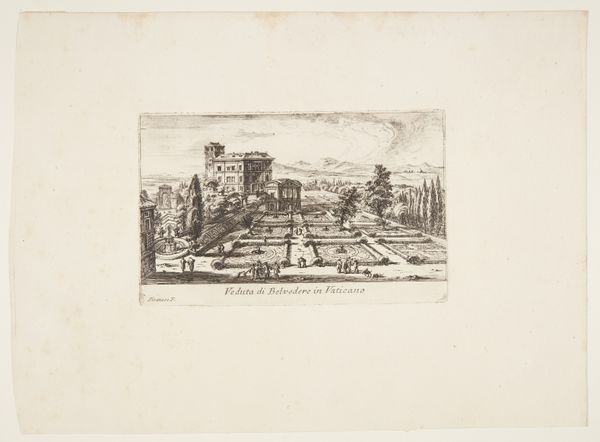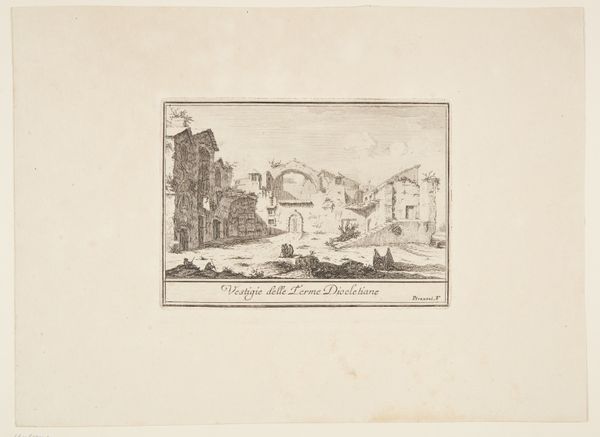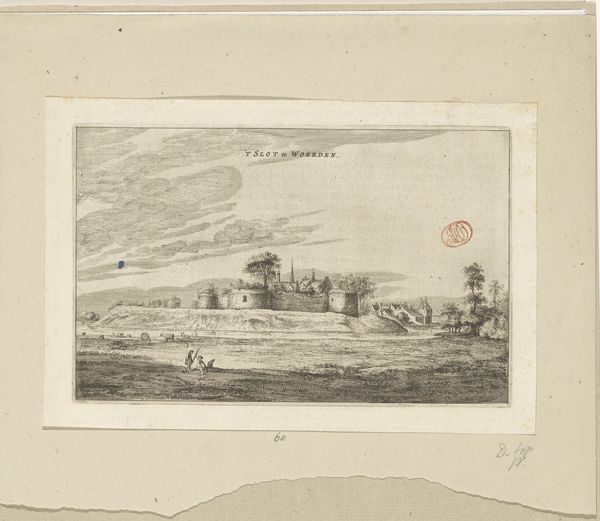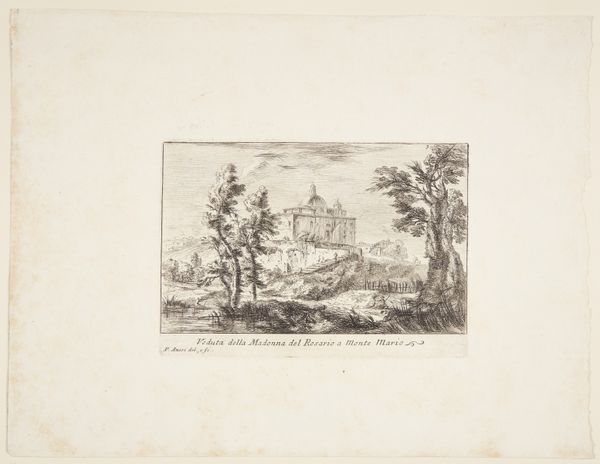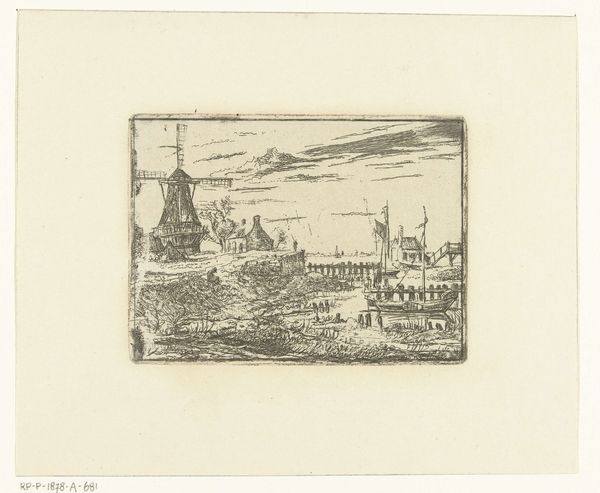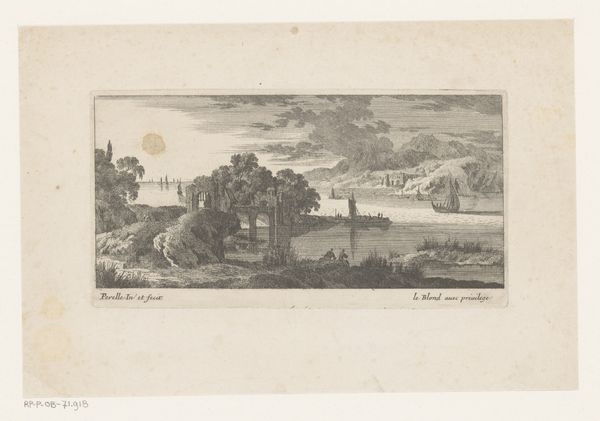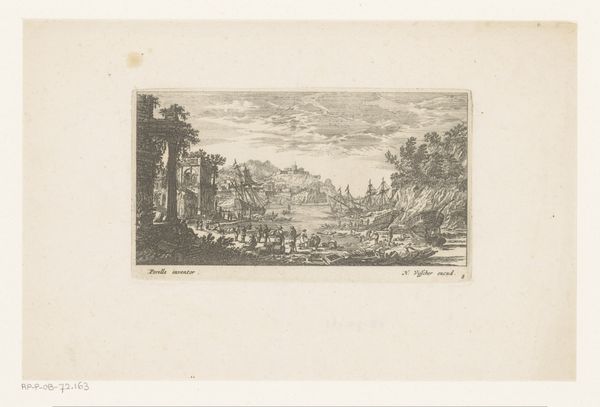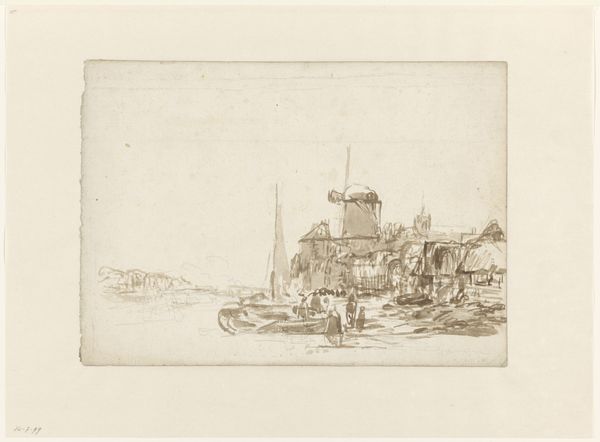
print, etching, engraving
#
baroque
# print
#
etching
#
cityscape
#
italian-renaissance
#
engraving
Dimensions: 115 mm (height) x 179 mm (width) (plademaal)
Giovanni Battista Piranesi created this print, View of the Castel S. Angelo, using etching, a process that democratized image-making in the 18th century. Piranesi would have coated a copper plate with wax, then scratched his design into the wax, exposing the metal beneath. Immersing the plate in acid would then bite away at these exposed lines, creating grooves. The deeper the bite, the more ink it would hold. The plate was then inked, and the surface wiped clean, leaving ink only in the etched lines. Pressed against paper, it transferred the image. This method allowed for the creation of multiple, identical images, making art more accessible. Notice how the density of lines creates a range of tones, from the solid blacks of the architecture to the faintest grey washes suggesting atmosphere. Through this relatively simple industrial process, Piranesi transformed architecture into something both monumental and intimate. The print becomes a vehicle for circulating his vision of Rome. The work involved is considerable, yet it yields an image that can be distributed and consumed widely. It's a reminder that even seemingly straightforward techniques can carry profound artistic and social implications, blurring the lines between art, craft, and industry.
Comments
No comments
Be the first to comment and join the conversation on the ultimate creative platform.
